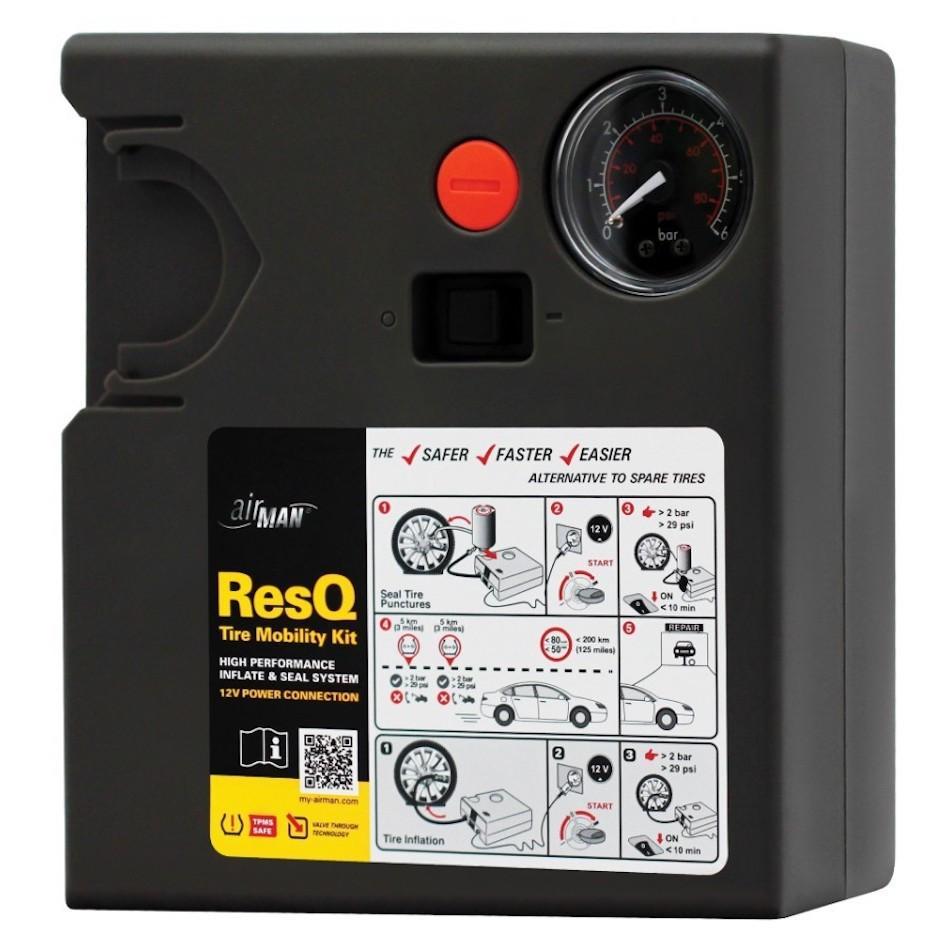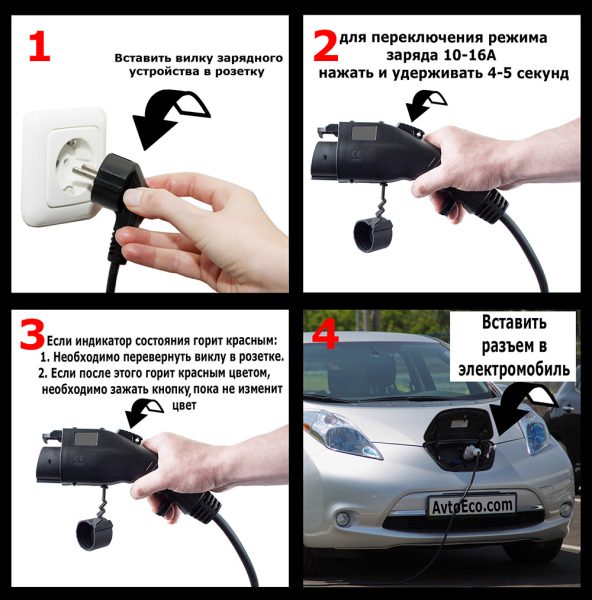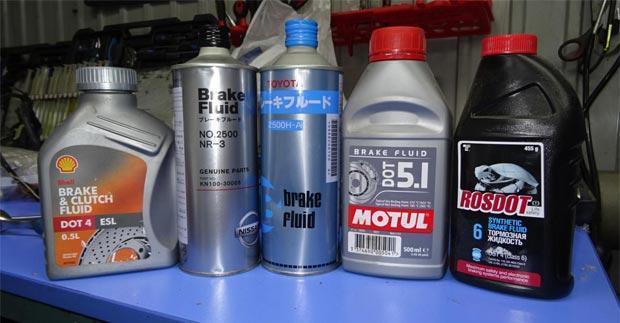
Types of brake fluid
Glycolic liquids
The vast majority of brake fluids used in modern vehicles are based on glycols and polyglycols with the addition of a small amount of modifying components. Glycols are dihydric alcohols that have the necessary set of characteristics suitable for operation in hydraulic brake systems.
It so happened that among several classifications developed in different organizations, a variant from the American Department of Transportation (DOT) took root. All requirements for DOT-marked brake fluids are detailed in FMVSS No. 116.


At present, three main types of brake fluids are used on vehicles operated in the Russian Federation.
- DOT-3. It consists of 98% glycol base, the remaining 2% is occupied by additives. This brake fluid is rarely used today and has been almost completely replaced by the next generation of the DOT line. In a dry state (without the presence of water in the volume) it boils no earlier than before reaching a temperature of +205°C. At -40°C, the viscosity does not exceed 1500 cSt (sufficient for the normal operation of the brake system). In a humid state, with 3,5% water in volume, it can boil already at a temperature of +150°C. For modern braking systems, this is a fairly low threshold. And it is undesirable to use this liquid during active driving, even if the automaker allows it. It has a rather pronounced chemical aggression in relation to paints and varnishes, as well as to plastics and rubber products unsuitable for working with glycol bases.


- DOT-4. In terms of chemical composition, the ratio of the base and additives is approximately the same as for the previous generation fluid. DOT-4 liquid has a significantly increased boiling point both in dry form (at least +230°C) and in wet form (at least +155°C). Also, chemical aggression is somewhat reduced due to additives. Because of this feature, earlier classes of fluid are not recommended for use in cars in which the brake system is designed for DOT-4. Contrary to popular belief, filling in the wrong fluid will not cause a sudden failure of the system (this will only happen in the event of critical or near-critical damage), but can significantly reduce the life of active elements of the brake system, such as the master and slave cylinders. Due to a richer additive package, the allowable viscosity at -40 ° C for DOT-4 has increased to 1800 cSt.
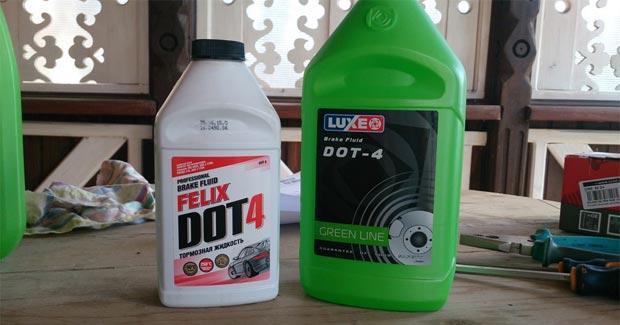

- DOT-5.1. High-tech brake fluid, the main difference of which is low viscosity. At -40°C, the kinematic viscosity is only 900 cSt. DOT-5.1 class fluid is used mainly in loaded brake systems, where the fastest and most accurate response is required. It will not boil before it reaches +260°C when dry, and will remain stable up to +180°C when wet. It is not recommended for filling in civilian cars designed for other standards of brake fluids.
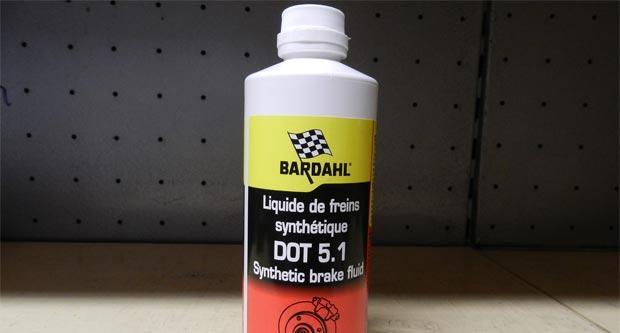

All glycol-based liquids are hygroscopic, that is, they accumulate moisture from the atmospheric air in their volume. Therefore, these fluids, depending on the initial quality and operating conditions, need to be changed approximately once every 1-2 years.
The actual parameters of modern brake fluids are in most cases much higher than the standard requires. This is especially true for the most common DOT-4 class products from the premium segment.
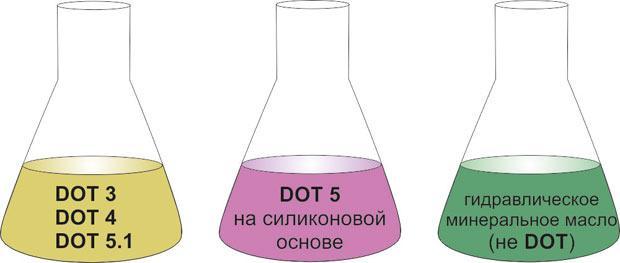

DOT-5 Silicone Brake Fluid
The silicone base has a number of advantages over the traditional glycol base.
Firstly, it is more resistant to negative temperatures and has a low viscosity at -40°C, only 900 cSt (the same indicator as DOT-5.1).
Secondly, silicones are less prone to water accumulation. At a minimum, water in silicone brake fluids does not dissolve as well and often precipitates. This means that the likelihood of sudden boiling in general will be lower. For the same reason, the service life of good silicone fluids reaches 5 years.
Thirdly, the high-temperature characteristics of DOT-5 liquid are at the level of technological DOT-5.1. Boiling point in a dry state - not lower than +260°C, with a content of 3,5% water in volume - not lower than +180°C.
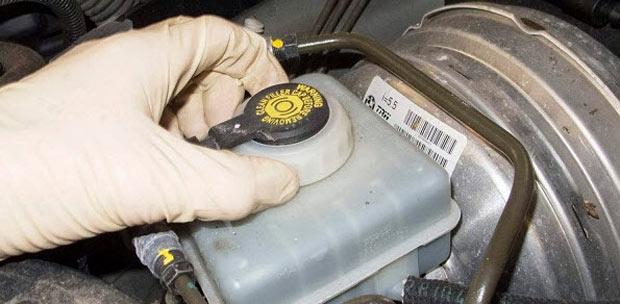

The main disadvantage is low viscosity, which often leads to profuse leakage even with little wear or damage to rubber seals.
Some automakers have chosen to manufacture brake systems for silicone fluids. And in these cars, the use of other bunkers is prohibited. However, silicone brake fluids can be used without serious restrictions in cars designed for DOT-4 or DOT-5.1. In this case, it is desirable to completely flush the system and replace the seals (if possible) or old, worn-out parts in the assembly. This will reduce the chance of non-emergency leaks due to the low viscosity of silicone brake fluid.


Watch this video on YouTube
